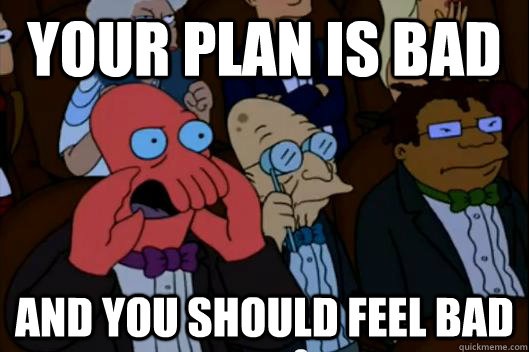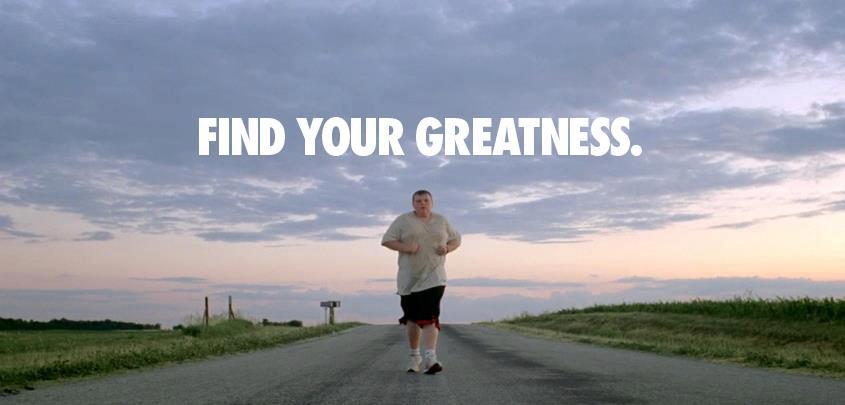
The Only Fitness Guide You’ll Ever Need (Sort Of)
By Shayne
(A rehashed combination of last year’s 5-part series! Shablagoo!)
With the arrival of the New Year comes the commonly-broadcasted, yet rarely-accomplished declaration known as a “New Years Resolution”
The concept is simple enough: you’re supposed to come up with a goal or challenge that you will take on to commemorate the beginning of the new calendar year.
An overwhelmingly large percentage of New Year’s resolutions have to do with fitness.
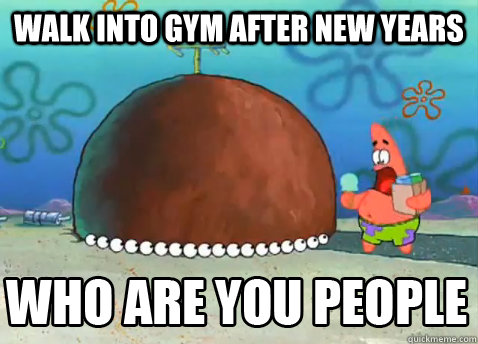
You know what I’m talking about:
Getting ripped.
Getting swole.
Getting shredded.
Getting a bigger butt.
Getting toned.
Getting lathered in grease and roasted.
Okay, maybe that last one isn’t an actual thing—I was just checking to see if you were still paying attention.
Anyway, the basic summation of all these is the common NYR of:
“I want to get in shape”
The mysteriously punctual entity known as “The Internet” is well aware of this common NYR too, as there’s always a tidal wave of “How To Get In Shape” articles that come out the woodwork during this time of year.
I took a quick peek at a lot of these before putting this article together to see what I was up against, and noticed an interesting tend:
Nearly every article I skimmed through seemed to be written for two main demographics: The Gym Rat or The Soccer Mom.

By that, I mean that the articles catered to people who either aspired to become hardcore steroid-fueled rage faces, or those who simply want a participation award for pseudo-exercising without any real ambition. You know, like those people who wear workout clothes all day without…f*cking actually exercising.
But what about people in the middle? What about those of you who want to take their fitness seriously, but not as seriously as this guy?
Well, that’s where I come in.
My name is Oscar Shayne Pearson,—also known as Shayne the Stampede (formerly), Shayne Paladin, Shayne: King of the World, etc.—and I’m here to help.
I’m here to give a (hopefully) accessible guide to those of you who might need help getting started, or want to modify what you’ve been doing.
Let’s start the quick—yet important section of this article known as “establishing credibility”. It’s basically the part where I say a bunch of stuff about myself in an effort to prove to you that I’m not just talking out of my ass.
It might sound like I’m just rounding off a bunch of my accomplishments in a frenzy of self-indulgence…which is sort of true, but I’m really just trying to show you that you’re in good hands.
Okay, here we go…
- I was a Division-1 track athlete at UC Santa Barbara, competing in both the Long Jump and the Triple Jump. I came in as a walk-on and finished as an All-Big West Conference Selection in the Long Jump during my senior year.
- As of now, I’m the 7th best Triple Jumper in UCSB history.
- As well as the 8th best Long Jumper.
- I tore both my ACL and my Meniscus in my right knee during my junior year of high school, forcing me to sit out the entire year of sports. Fortunately for me, I was able to successfully rehab my injuries and was able to finish both my football and track careers during my senior year.
- I’ve been coached by both Chip Schaefer and Ramsey Nijem. Chip has coached athletes such as Kobe Bryant and Michael Jordan in the past, before serving as the head strength coach at UCSB from 2012-2014. Ramsey was also at SB before moving on to work for the Sacramento Kings, where he is today as head of strength and conditioning.
- My jumps coach in college was Travis Anderson, who was an All-American 400 meter sprinter at the University of Oregon.
- I once had two cats named Spongebob and Patrick.
- My body fat percent is around 6%.
- I’ve never been to Six Flags.

Okay, that’s enough.
Hopefully, this pole-jocking of myself got one simple message across:
I. Love. Fitness.
Seriously! I love the feeling of euphoria I feel afterwards, setting new challenges for myself, and constantly working to optimize my health.

HOWEVER (I capitalized it because it’s important. Obviously), while I absolutely love being active, it does not dominate my life.
This is why I call myself a “fitness layperson” (title reference!).
I don’t count macros—I don’t even really know what the f*ck that means.
I don’t “bulk” or “cut”.
And I certainly don’t do any of those stupid juice cleanses.
Despite all that, I’m perfectly satisfied with my fitness level, which has been maintained through an approachable and practical set of guidelines.
Sure, I’m in pretty good shape. And yes, I exercise in some capacity most days out of the week. But I also know there’s more to me as a person.
As I’m sure there’s more to you than your fitness ambitions. I’m sure you all have other hobbies, interests, and time commitments.
That’s why this article isn’t trying to convert you to any sort of “fitness cult”:

I’m just trying to help you make little changes in your life that will maximize your time and hopefully benefit you in the long run.
Obviously, I’m not going to force you to do anything. Keep in mind that your fitness (or lack thereof) will have zero effect on my life, so this is solely for your benefit.
Now don’t get me wrong: this fitness thing isn’t easy, man (no gender discrimination intended). If it were, everyone would be walking around with six packs…and I’m not talking about Budweiser.
It takes discipline, commitment, and a bunch of other words that you can find in generic exercise slogans.
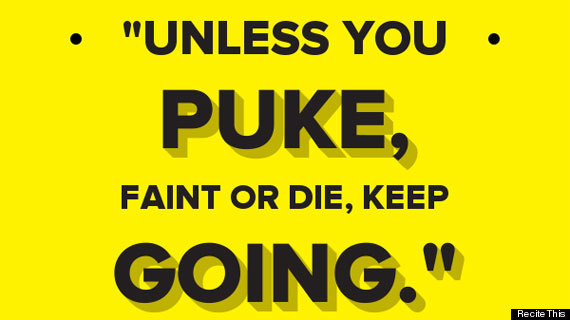
All jokes aside (for now), reading this article will be a waste of your time unless you’re willing to get a least a little bit serious about getting or staying in shape. You’ll see what I mean once we get started.
This is an accessible guide, for all of you out there who want to better your lives without having to abandon your friends, families, and general decency.
Let’s begin…
Part 1: The Mental Aspect

I think a main reason why NYRs wither with time is because the mentality to stay on the right path isn’t effectively cultivated. In other words, people rush to get into the gym headfirst as soon as they get over their New Year’s hangovers.
Which is perfectly understandable, but it’ll be beneficial in the long run to hold your horses for a bit. You need to know what to expect, and how you can overcome the challenges that await before diving in.
Don’t even think about stepping into that gym until you’ve…uh, thought about these things first:
Keep an open mind, and check your ego at the door

A huge pet peeve of mine—and one of the main reasons I’m writing this article—is when someone is frustrated with their current exercise habits, but blows people off whenever they try to help.
Look—I don’t want to seem too harsh, but you’re probably reading this guide for a reason. I’m guessing that it’s because what you’re currently doing isn’t working. And if it hasn’t worked in the past, what makes you think that it’ll work now?
Letting go of your ego and being open to advice is one of the best things you can do for yourself.
…And if you don’t want to have an open mind, reading the rest of this article will be a complete waste of your time.
Remember: Fitness is a one-horse race. Your body, your pace.
I know, man. I know: it’s scary out there at first.
You have dudes and gals walking around looking like they belong on Teen Wolf, and it can be pretty intimidating.
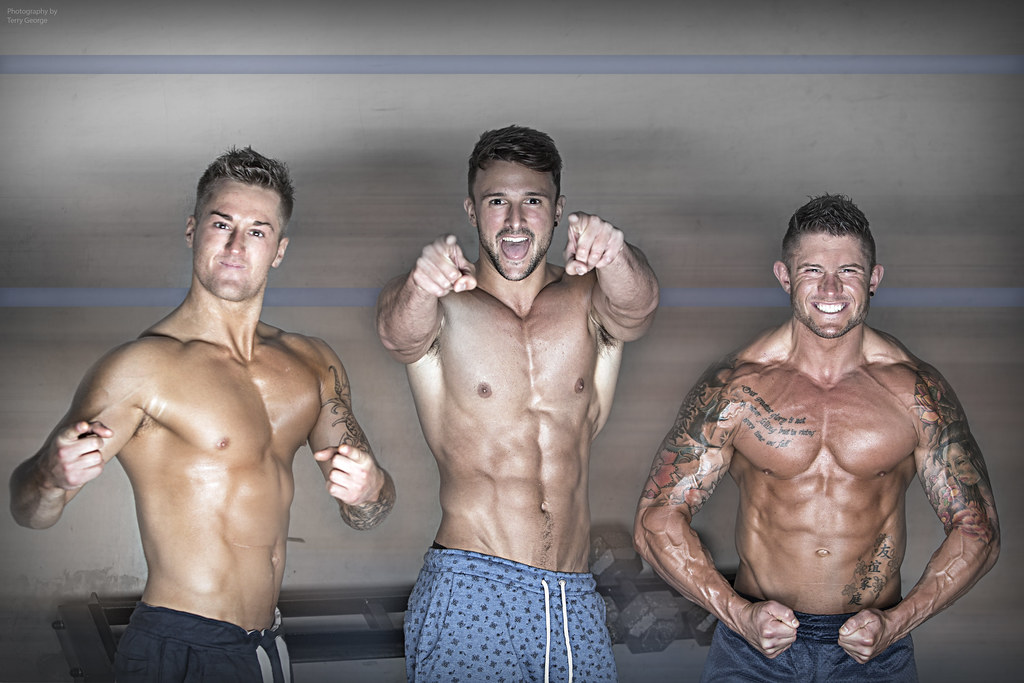
In fact, I’ve had people tell me that they stopped working out because the thought of looking like a noob in front of these life-sized Barbie and Ken dolls was just too embarrassing.
You might get down on yourselves if you need to only squat the bar when you start out, but remember this (totally original) quote:
“It will get better, because you will.”
Seriously. One thing I love about exercise is that there is a direct correlation between your effort and your results…to an extent (more on this later).
Everyone—EVERYONE starts somewhere. Even those idiotic gym rats did at one point. Don’t let it discourage you. If you still feel too embarrassed when you start, then try exercising really early in the morning or late at night when there’s less gawkers.
At the very least, you’ll most likely be in the company of people in the same situation as you.
⊕Fitness Myth #1: Foods that are high in fat make you gain weight
Yes and no.
Here’s the only equation you’ll ever need to know about weight:
Calories in + Calories out
If you eat more than you burn, you’ll gain weight. If you eat less than you burn, you’ll lose weight.
The misconception probably comes from the fact that foods high in fat tend to also be calorie bombs.
Stop Comparing

Spring-boarding off that last point, I’m going to add another quote:
“Comparison is the thief of joy”
I get bothered whenever I notice someone looking at a picture of a fitness model or an athlete while saying “Gee, I wish I could look like this person”.
I understand—it’s great to have a goal, and pictures of shredded people can be very inspirational. But it can also be setting yourself up for disappointment when you realize that modern photos are often artificially made.

Most of these fitness photos are taken literally seconds after the person has finished working out, and are intensely edited and photoshopped thereafter. This nonsense has become such a regular practice that you’re practically not even looking at an actual human being anymore.
Refraining from comparison is especially hard to do these days, with all these social media accounts that post videos of people doing these crazy workouts. Don’t worry— most of these videos and vines are just random nonsense.
Don’t focus on trying to look like other people. Focus on becoming the best possible you. You’ll be surprised at how much happier you’ll be with your body in the long run.
Patience, Patience…………………Patience
What’s that, you say?
“Hey Shayne! Give us another generic quote!”
Well, if you say so!
“Rome wasn’t built in day”
And neither will your bod.
You absolutely need to know this before starting your journey to a healthier life.
It takes a long time to see any noticeable results, and it most likely won’t be you who notices them. But you need to just keep at it, and the results will come. Trust me.
If instant gratification is your thing, then this whole fitness thing might not be for you. It takes time, and dedication. Know this, embrace it, and retell it.

Part 2: Preparation

Okay, so by now we should have the mentality foundation down.
So we’re ready to start destroying the stairmaster now, right?
Not quite.
…Shark bite.

Sorry, I couldn’t resist that rhyme opportunity. Anyway….
No battle is worth fighting without a proper plan, and this applies to the never ending war against ice cream, alcohol, and those Taco Bell nachos that you totally regret five minutes after consuming.
Preparing a practical plan (try saying that five times fast) is as equally important as the act of exercising itself—never forget that.
Start with an end goal in mind (but don’t get too specific)
Having a clear goal to pursue will really help you avoid the feeling of being lost. So, ask yourself: what do you really want out of all this?
More running endurance?
To add bulk?
To lose bulk?
To be able to lift your girlfriend during sex?
To be able to life your boyfriend during sex?
Whatever your goal is, keeping it in mind will add both motivation and focus to your fit lifestyle.

HOWEVER, I will advise you to steer clear from two main mistakes people make with their goals: Being unrealistic, and being too specific.
Now I’m not opposed to setting high goals, but failing to make them attainable will only lead to disappointment. If you’ve never jogged regularly before, then aiming to run a full marathon in two weeks might not be the best thing to shoot for.
Don’t get me wrong, you could totally run a full marathon after two weeks of training if you fully put your mind to it….but you might also die in the process.
Literally. Die.
Like this:
Another big platform for frustration is when a goal is too specific.
Let’s say someone wants to lose 10 pounds while toning their body, but has never worked out before. This person might start lifting weights and doing wind sprints to reach their goal—both of which I’d recommend for building lean muscle.
However, what usually happens in this situation is that people are shocked to see that they might have actually gained weight when they step on the scale. This leads to frustration, and frustration leads to quitting.
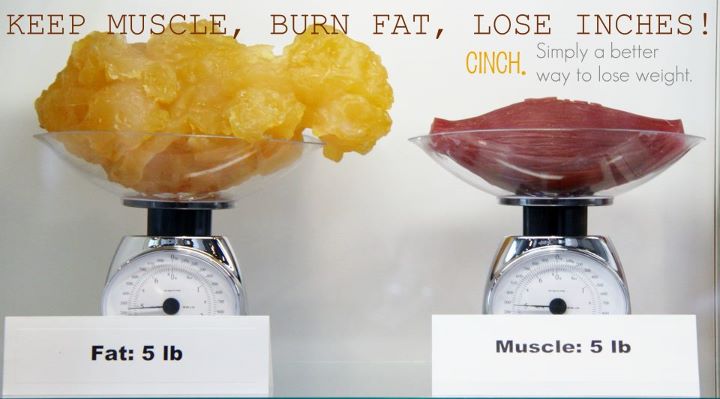
What this person didn’t realize, though, is that muscle weighs more than fat. So there’s actually a high chance that he/she was toning their body and burning fat, but also building solid muscle. Although they have made great progress, they won’t be satisfied because they didn’t lose ten pounds.
Make sense?
As my friend Jessica Mosbarger—who was captain of UCSB’s National Champion Rowing Team—says, “Look at the mirror, not the scale”.
⊕Fitness Myth #2:Elevation masks work

No. I don’t care how cool you think they look.
Running at high elevations is a tried-and-(maybe)true method that runners use to expand their lung capacity.
All those masks do is basically simulate someone choking the sh*t out of you. Sure, it’ll be harder to breathe—but that doesn’t necessarily mean that your lungs are getting any benefit from it. In fact, they’re probably not.
Because you’re choking.
Typing as essay with one hand won’t make the paper any better, and running while choking sure won’t help your lungs at all.
There’s no way around hard work. If you want to increase your lung capacity, you’re going to have to up the intensity of what you’re doing.
Create A General Plan That Matches Your Goals (Easier said than done)
Few things bring my piss to a boil more than seeing a person fail to do their “fitness homework”.
While this guide is a general overview for the layperson, there are hundreds of fitness articles online and in magazines that are tailored to hyper-specific goals. It takes about 20 minutes to read through enough of these to be able to get a general idea of what habits you should adopt.
There needs to be a connection between your exercise habits and your goal, or you’ll just be wasting your time.
Some of you might be thinking “Thanks, Captain Obvious”, but it’s actually more of a common issue than you might think.

Here’s a conversation that happens every now and then:
Person– “I want to jump higher so I can be more competitive when I play basketball, so I’ve been doing 100 calf raises every day”
Me– “Well, that might not be the best way to go about it. Jumping uses more of your bigger muscles like glutes, hamstrings, and quads, so you’re better off doing explosive exercises that activate those muscles”
Lo and behold, the next time I see this person in the gym, he/she is doing….calf raises.
At this point, the person is wasting their time, but has now also wasted my time since I took a few seconds to try and help.
And now I’m mad and will never help them again. Ever.

It sounds ridiculous, but it happens.
People often ignore facts if they challenge their current beliefs. Remember what I said earlier: you are doomed if you keep a closed mind.
Part 3: While In The Iron Jungle

This is the portion that I know a lot of you have been waiting for.
If you’ve been following along so far, bored to death, and have made it to this point: thank you for your patience.
If you skipped the first two parts and have just landed: welcome.
So we’ve got the mentality sharpened up, and we’ve put together a decent plan.
Now, it’s time to finally step into the belly of the beast: The track, the pool, the studio, the trail, the hill the stadium, and The Iron Jungle…or “Gym”, for you less savvy folk.
I’ve put together a few tips that I think everyone should follow if they want to maximize their time while exercising. We’re all busy people at this point, and time is crucial, so hopefully the following recommendations will help expedite your path to a healthier being.
Some of these tips will pertain only to gym life, but I don’t think this should be much of a problem, since the Gym Boom is still in full effect. However, if you don’t intend to “Gym” (verb, apparently) at all, then I’m sure you could still learn something from the sections that incorporate that aspect.
Let’s do it:
Skip Static Stretching When Warming Up

Quick question: Which is stretchier? A rubber band that’s been in the freezer for 12 hours, or a rubber band that’s been in the microwave for 30 seconds?
Now think of your muscles as a rubber band.
Your muscles are cold when you start a workout, and stretching immediately will only stretch out muscle fibers that aren’t ready for that kind of movement yet, which makes injury a lot more likely.
Instead, focus on a dynamic warm up to get your blood pumping. 10-15 minutes of doing cardio machines, jogging, or other drills are a great way to get your muscles nice and warm. Look up some “dynamic stretches” that you enjoy doing, and throw those in afterwards.

A good practice is also doing a “warm up set” with whatever exercise you plan on doing. It generally entails you performing the exercise with minimal weight, to get your body used to the movement.
If you still feel a bit tight afterwards, you can throw in some light static stretching. Don’t overdo it, though—save the prolonged stretching for after you workout.
I typically like biking for 10 minutes to get the blood flowing, followed by a quick jog and some foam rolling, but you can play around with whatever suits you.
Prioritize

We are in the midst of the busiest time of the year for gyms.
There’s going to be people everywhere, and it’s unlikely that you’ll always be able to do every workout that you planned.
With this in mind, I would skim through your schedule for the day and pick out a couple that are “musts” for the given day.
How you prioritize is completely up to you—all that matters is that you put first things first, and then try to adjust with your remaining exercises.
I personally prioritize workouts that use a barbell, since most gym rats like to spend a minimum of 6 hours on them while doing 275 sets of 3 reps.
Hurry the hell up

The maximum time I think a workout for the layperson should take is around 90 minutes.
Your body can only handle so much stress in a given day, and it’ll eventually start to eat at your muscle tissue because you’ve been beating it up so much and it’s run out of calories to consume.
Lifting weights or running for 3 hours is nothing to brag about: it’s stupid. You need to find the happy medium where you feel that you’ve put a good amount of work in without feeling like you need a trip to the ER.

If you find that your workouts run over 2.5 hours, it might be time to cut out some exercises that you can afford to lose and try transferring them to a different day.
Also….
Don’t be one of those people who hogs a weight rack or machine. It communicates that you have no regard for other people’s time, which will make you unpopular very quickly in the Iron Jungle.
Try to wait between 90 seconds and 2 minutes between each set. This will help you keep the intensity up, get some good cardio in, and shave time off your overall workout.
Superset if you’re strapped on time

This is a bit more for the advanced crowd, but it’s still good to know.
A great way to maximize your time is to incorporate “supersets”.
A superset is what you call it when you do two exercises in a row, with minimal rest in between. It keeps the heart rate up, gets a gnarly pump, and saves a bit of time.
There’s a lot of ways to play around with stuff like this, but a good place to start is to follow one main exercise with another that supplements the movement.
Some examples are:
Back squat + Box Jump
Bench press + Push up
Step up + lunge
Obviously, this will make your workout a whole lot more difficult, which is why it’s best to wait and assess your own workout capacity before incorporating supersets.
Also—don’t do them all the time. Or you’ll die.
Leave People Alone
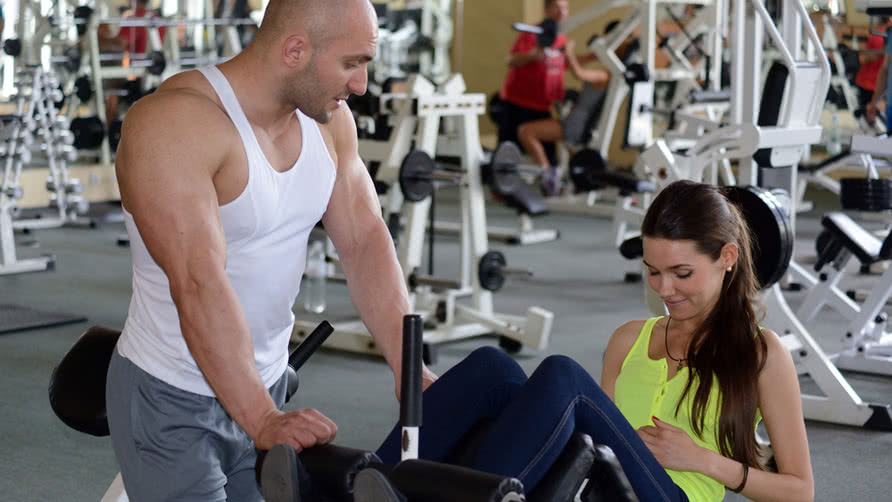
I’m a feminist, so I’m going to direct this at both men and women:
Nobody goes to the gym/trail/pool to get hit on, so don’t go to these places with the sole intent being to hit on people.
Now, there’s nothing wrong with meeting someone and building a relationship over a common interest, but I’m sure most would agree that you can tell if another human is interested in you within 30 seconds or so.
Sure—there are definitely those individuals who apparently only exist in gyms to attract gawkers. People who wear revealing clothes, shout a whole bunch, and are constantly surveying the room to see who’s watching. I say let them be: their power only grows if you give them attention.
But I digress. The point I’m trying to make is that exercise should be a place of relative peace for people, so you shouldn’t deliberately intrude on that because they happen to look good in tights.
Form is your friend

What’s more beneficial?
A 185lb squat with good form?
Or, a 225 squat with a curved back and improper knee placement?
…Almost seems a bit too obvious, right?
This advice has been beaten to the ground for years already, and I’m basically only including it because I think I have an obligation to.
So I’ll keep this short: Using good form with intermediate weight helps your body adopt the proper strength and biomechanics that will assist you in safely transitioning into heavier weight.
The end.
Embrace Free Weights….eventually

By now, you probably have realized that I’m a big advocate of weight training. I think that weight lifting is the #1 way to build lean, functional muscle.
That being said, I don’t use weight machines during my workouts. Ever.
Now, please keep in mind that I’ve been doing this exercise thing consistently for years. I’m familiar with some pretty complex free weight movements and am comfortable executing them regularly.
I’m not saying that you should ignore machines out the gates and start chest pressing 60lb dumbbells. Machines have come a long way in terms of function, and they’re a great way for a beginner to build some strength without feeling intimidated.
However, you probably want to start thinking about hitting those free weights eventually. Free weight exercises are more functional, require you to activate important stabilizing muscles, and allow for a free range of motion.
Here’s a great quote that I read from Men’s Health around 2010:
“The barbell is king, and the dumbbell is queen”
Machines are good for isolating muscle groups, which is mostly important to competitive bodybuilders and not laypeople.
Challenge Yourself

Here’s something to remember: you get stronger by putting your muscles under a level of stress that’s just outside the comfort zone.
If you’re dumbbell pressing with 40lb weights every time you do them, then you’ll indubitably reach that “plateau” every frat boy has nightmares of.
Some people are perfectly okay with this—I top out on power cleans at around 225lbs nowadays, since I don’t do sports anymore and am satisfied with that weight.
However, for someone who’s looking to improve, an increase in intensity is the way to go.
Don’t be afraid to take it up a notch.
5 extra pounds (with a spotter).
1 more lap.
2 extra hill runs.
4 more minutes of running.
Stepping it up might render you unable to finish the workout.
Never fear, though—this is a good thing. Pushing yourself past your comfort zone will, in effect, eventually expand your comfort zone, which will make that extra set easier the next time around.
Breathe

Pretty self-explanatory here. You want to keep the oxygen flowing through your body, mainly to your brain and your muscles.
Breathing will help keep you loose, too. This might not sound like the best thing with an act as rigorous as exercise, but your body will actually perform at a higher level when it can move fluidly and without stress.
Often times, I’ll see people do entire sets while only taking one or two breaths.
Not only is that detrimental to your workout–it’s scary, because you can pass out from lack of air.
Know When To Fold ‘Em
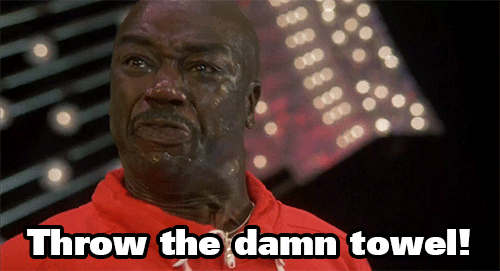
I’m going to keep it rolling here with another quote. Here’s a tip my college Track coach, Travis Anderson, told me that helped change my career for the better:
“Your best ability, is your availability”
Travis meant that, in the long run, it’s okay to cut a workout short if it means that you’ll avoid hurting or overtraining yourself.
Picture this: You’re nearing the end of the workout, and you want to finish the day with some wind sprints when your hamstring starts to cramp. You’re fully in the Zone though, so you consider pushing through the cramp and finishing those sprints.
Let’s stop and think: What happens if you stop the workout and go home? You’ll most likely be able to come back and do the wind sprints another day. In the end, you miss out on one day of running. No harm, no foul.
But what if you decide to go all “Rocky Balboa” and try to push through anyway? Let’s say you end up going for it, and pull your hamstring in the process. You’re now forced to sit out 3-6 weeks because you didn’t just shut it down.

See what I mean? Letting go of one day is a much wiser decision to make than having to lose several weeks.
Know when to push through and challenge yourself, but also be smart about things and consider the bigger picture of your fitness.
Part 4: Post Exercise

…Oh, you thought we were done?
As if! This is a complete layperson’s guide, and it would be a disservice to you all if I just skipped out after that last section.
Anyway, I firmly believe that what you do after you’re finished exercising is more important than the workouts themselves. If you don’t recover properly and keep pounding your body, then you’ll end up burning out.
Muscle is built by breaking down tissue through exercise, and then building it back up. If you don’t allow it to build back up, then you’re seriously harming yourself.
Here’s a few things to help you recover properly.
Get into the habit of foam rolling

This is one of the main things that you can independently take away from this guide and have it immediately impact your life.
While that was indeed dramatic (I’m a dramatic person, after all), there’s a fair amount of truth to it.
I’m saying this because foam rolling is a terrific practice that will help your body’s blood flow, increase your range of motion, and assist in the recovery process so you can hit the next workout hard.
This is all achieved through “myofascial release”, which is a curtain-dressed way of describing a deep tissue massage. The constant pressure the roller puts on your muscles helps restore their elasticity.
If you’re new to foam rolling, it’s going to hurt. A lot.
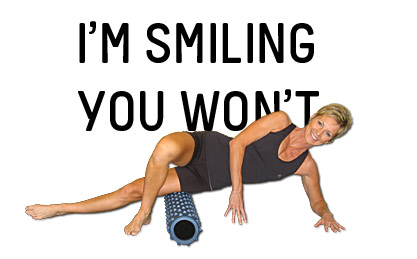
But if you’re able to withstand the pain and looking a bit goofy, then you’ll instantly notice how loose and responsive it’ll make you feel.
Most people save foam rolling for after their exercise session—which is a good idea, but there’s nothing wrong with rolling out a bit as part of your warm up.
There’s a bunch of fancy-pantsy rollers out there on the internet, and most of them are pretty legit. But I’d recommend just using the ones that are usually lying around the gym to learn how to use one and figure out your firmness tolerance.
Okay, now you can stretch

I know that I forbade you from stretching before your workouts, but doing so after you’re all finished (preferably after foam rolling) is perfectly fine.
Now, there’s been some fairly equivocal debates for and against static stretching and its functionality recently, but I side more towards the “Pro” side.
Some of the best athletes I’ve ever met were also among the most flexible. Whether their flexibility directly translated to their given sport or not is debatable, but I think that general flexibility and good range of motion will help you adapt better to new movements and exercises.
If you’re short on time and have to choose between foam rolling and static stretching, take foam rolling 9 times out of 10. But it never hurts to stretch it out when you can.
Rest, Rest, Rest

Ironically, this will probably be the most difficult guideline to follow for a lot of you.
It’s time to play “Two Truths & A Lie”.
I’ll go first:
- I only lift weights twice a week
- I have at least one scheduled rest day each week
- Every now and then, I’ll go an entire week without lifting a single weight
Which is the lie?
Trick question—they’re all true.
For those who are curious: I do two, total body lifting sessions a week. 2 of the other days are spent doing some form of running or stair workout, 2 days are for active (low intensity) recovery, and Sundays are always complete rest.
So if you add all that up, there are only 4 days out of the week when I’m really getting after it, and only 2 are spent lifting weights.
Now you don’t have to follow what I do, but I’m just showing you this to illustrate how little I’m actually in the gym.
Why?

Rest, that’s why.
The quote that I’ll use to help explain this comes from the most unlikely of sources:
Those who know me well (or at all) are aware that I’m a huge fan of the Japanese cartoon show Dragon Ball Z. The show’s main character, Goku delivers a brief speech during an episode that has always resonated with me. It goes like this:
“You have to understand that rest is sometimes as important as training….maybe even more important. If we give ourselves and our muscles a chance to build back up, then we can get a lot more out of them than if we just kept training the whole time”
I know Goku is a fictional character and all, but this is some real-deal-Holyfield advice here.
This isn’t an issue that only applies to new people, either. The notion of constant, rigorous exercise as the only way to get fit is present across all experience levels.
I suppose it makes sense, too. The marketing for fitness products and programs are effective because they always show super fit people engaged in rigorous activities.
Like, look at some of these protein shake advertisements. They’re freaking disgusting.

Imagine if the ad just showed this guy resting on his couch?
Anyway, what the argument in favor of rest basically boils down to is that you can’t keep putting your body under immense stress and expecting it to respond positively.
You might get results eventually with this method, but you’ll reach your goals much faster if you just chilled the hell out every now and then and let yourself recover.
This is all to avoid overtraining—which is a bigger threat to your body than a tub of ice cream after a bad breakup.
Overtraining is what happens when you wake up every day and exercise like you’re in a Gatorade commercial without an extended period of rest. Your body isn’t given a chance to properly recover, so it responds by shutting down in the hopes that you won’t be able to torture it anymore.
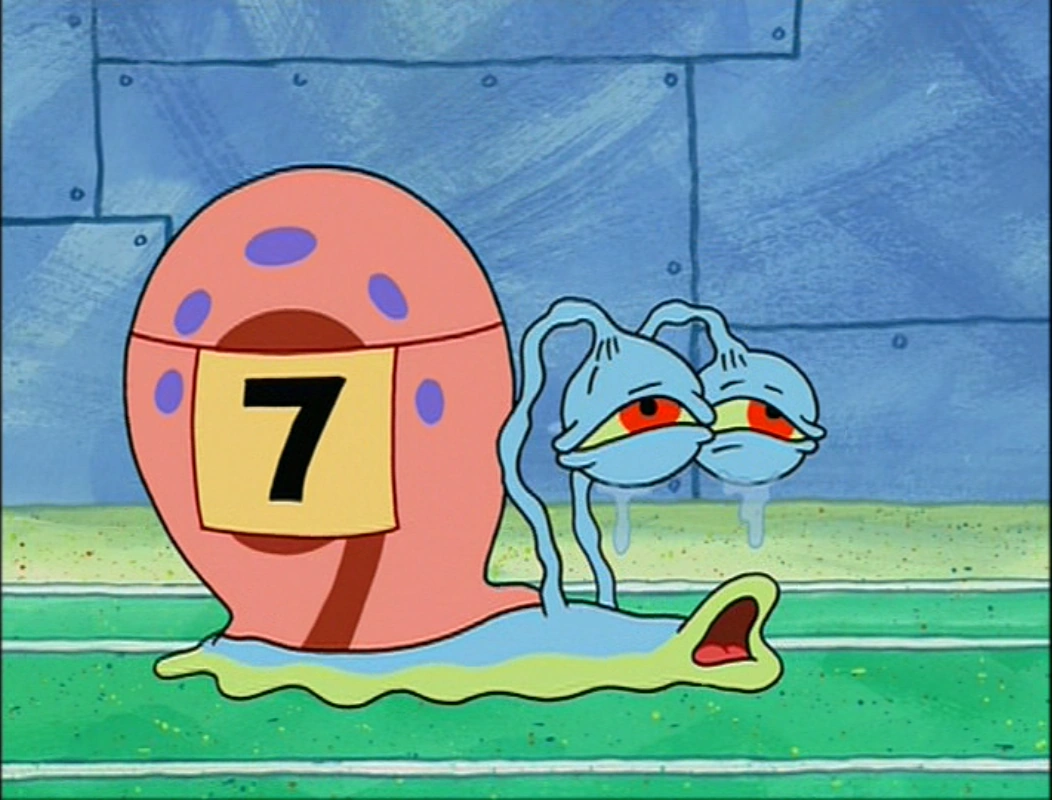
Have you ever felt horribly sluggish before or during a workout?
Or noticed that you can’t lift as much or run as fast as usual?
Are you ever unusually sore?
Uncharacteristically moody or depressed?
All of the above are warning signs of overtraining.

The scary part is that a lot of people take the aforementioned symptoms and convince themselves that they’re actually undertrained, and therefore need to work harder.
If you think lifting two times in a day is a good idea, you are wrong.
If you think going to the gym 7 times a week is a good idea, you are wrong.
If you think that sleeping 4 hours and working out as soon as you wake up is a good idea, you are wrong.
If you think avoiding food after you exercise is a good idea, you are wrong.
I’m all for working hard—it’s practically my calling card. But you need to be smart with your effort.
I know it might be hard sometimes to hold back when you’re so eager to get fit. But you need to give yourself a mental and physical break every now and then—you’ll be happier for it.
⊕Fitness Myth #3: Squats need to be horrendously low to count

The title there probably gives this one away, but I disagree with this claim. Some will object to my…uh, objection, but it’s my guide–I do what I want.
When determining the range of motion (ROM, if you wanna get fancy) of a given workout, you have to assess it in terms of functionality.
What I mean by this is that, very few activities in life require someone to bend their knees all the way down. Why, then, does it make sense to squat “ass-to-grass”?
For those who answered “It doesn’t make sense”, you are correct!
Not only are ultra-deep squats terrible for your knees, but they’re only going to really benefit your life if you flip tires all day for a living–or are a professional leapfrog player.
So, the real answer is that there is no real answer. Squat low if you want, stop at 90 degrees if you don’t. It really depends on YOU and what your goals are.
…But last I checked, there’s no Professional Leapfrog League.
Part 5: General Lifestyle (Misc.)

We’ve been through the mentality, the preparation, the execution, and the aftermath.
Now, it’s time for a few housekeeping items.
These are things that I couldn’t fit into other sections, but are still very important.
Don’t be a dick once you reach the mountain top

This one really grinds my gears.
Nothing disappoints me more than seeing someone, who started working out to live a healthier life, become a complete jackass once they reach their goal.
Let’s just put it on the table: self-esteem (or lack thereof) is what brings a lot of people to star exercising. People want to look good, feel good, and boost their overall self-confidence.
Now, my question is: at what point do certain people completely forget this and think it is okay to walk around like they’re hot shit while demeaning others who might be less fit?

I used to work at the gym on my college campus (UCSB), and some of my coworkers were the biggest culprits of this. They’d sit back and snicker at some of the patrons who were working out, as if it was some sort of comedy show.
My response to stuff like that is usually “at least they’re here”, which I really think that everyone should keep in mind. Even if a person is doing a low weight, lifting with bad form, or just using the equipment incorrectly, they still deserve credit for the fact that they dragged themselves out of bed and got to the gym at all.
There’s no need to demean anyone for not knowing any better.
Let me make this clear: your fitness does not make you better than anyone else.

The only thing you accomplish by elevating yourself over others because of how much they lift or how they look is revealing your own deep-seeded self-esteem issues…which exercising clearly didn’t help.
If you want to praise yourself about how far you’ve come and how committed you’ve been, then that’s fine.
But when you start making fun of someone because they’re just starting, weaker than you are, or they don’t work out at all, you’re not being funny. You’re actually being a bully—one that gives the rest of us a bad name.
See someone using bad form? Offer advice.
Notice a person struggling with low weight? Spot him/her.
See someone slowing down on their run? Smile in their direction as a form of encouragement.
Be part of the solution, not the problem.
And remember that there’ll always be someone out there who’s stronger, faster, and fitter than you.
Like me.
Just kidding.
Sort of.
⊕Fitness Myth #4: Carbs are the Devil

Carbs are not the Devil–I am. But seriously, this is wrong if you want to be exercising regularly.
Carbohydrates are what your body primarily converts into energy.
You know, the same energy that you need to exercise and whatnot.
If you avoid them altogether, then you’ll feel like dog shit all the time and your body will likely start eating muscle to get energy.
I like to stick to complex carbs like whole grains after exercising to replenish properly. You should think about doing the same. Whole grains are also high in fiber, so if anything they’ll help you lose weight because you’ll feel full.
Have fun!

Yeah, this might be a bit anticlimactic for a guide as extensive as this one, but this might be the most genuine advice that I can give you.
None of the things that I’ve outlined above matter if you’re going to be completely miserable while doing them.
Granted, there will always be days when you don’t feel like exercising. It happens to everyone—especially when just starting out.
But if you’re 4 weeks into a new program and you hate your life before, during, and after exercising, then it might be a good idea to explore some alternatives.
I don’t incorporate hill runs or power cleans into my workouts just because they’re beneficial (which they REALLY are), but I do them because I genuinely enjoy doing so.

But that’s just me: I love lifting weights, and I love running. I look forward to days that include either. That doesn’t mean that everyone else has to.
If you don’t like squats, don’t do squats.
If you hate deadlifts (like I do), then try to find an alternative.
If you love staring in a mirror and doing tricep pushdowns, then include them in your workouts…just try not to make a funny face in the mirror.
You don’t even have to step into a gym at all if you don’t want to. You could join a recreational sports league, try one of those fun classes like Zumba, do Yoga, swim, play volleyball, rob banks, run from the police, dodge traffic, run through the 6 with your woes, or any of the other awesome things that are available.

I have a friend who has just taken up Pole (Dancing?). She’s found a fun way to stay in shape that works for her, and looks great doing it.
…I suppose she could also turn into a profession too, if she wanted.
I have another friend who does Muay Thai. She can literally kick my ass, and it’s awesome.
There’s also this guy who I always see at this popular staircase in San Jose (Communications Hill) who walks up the stairs while spinning in circles. I’m not even kidding—I don’t know how he doesn’t get dizzy. It’s strange, but if that’s what gets him active, then I can’t be much of a critic.
If it makes you happy, gives you a confidence boost, and gives you a (safe and reasonable) workout, then you should stick to it.
Unless it’s CrossFit. That’s just stupid.

Finished!

And there you have it!
A complete guide of nearly everything that I could ever say about exercising…for what it’s worth.
22 pages, over 7,000 words, and over 6 hours of writing have all built up into something that I can confidently pass on to others in hopes that it’ll be of some help.
I really wanted to put something together that will actually help some people on their way to fitness.
After all, getting regular exercise is one of the best things you can do for your overall long-term health, and I just want to help make sure that you’re spending your time wisely while gaining some legitimate health benefits.
But I’ve talked enough now—go out there and conquer!
….Unless you’re doing CrossFit.
Seriously—don’t do it.
https://www.youtube.com/watch?v=N58TYv7Vt3A
Dedicated to the following:
Michael Roland, Uncle Robert, Carole Sangco, and Otis Madison. You will all be forever in my heart. I do this for you.
Written by Oscar Shayne Pearson.
Sources:
Ramsey Nijem, http://ramseynijemfitness.com/
Machines Vs. Free weights: Which is better?, http://www.builtlean.com/2013/06/11/free-weights-vs-machines/
Foam Rolling: Total Body Fitness, http://www.muscleandfitness.com/workouts/workout-tips/foam-rolling-total-body-benefits

